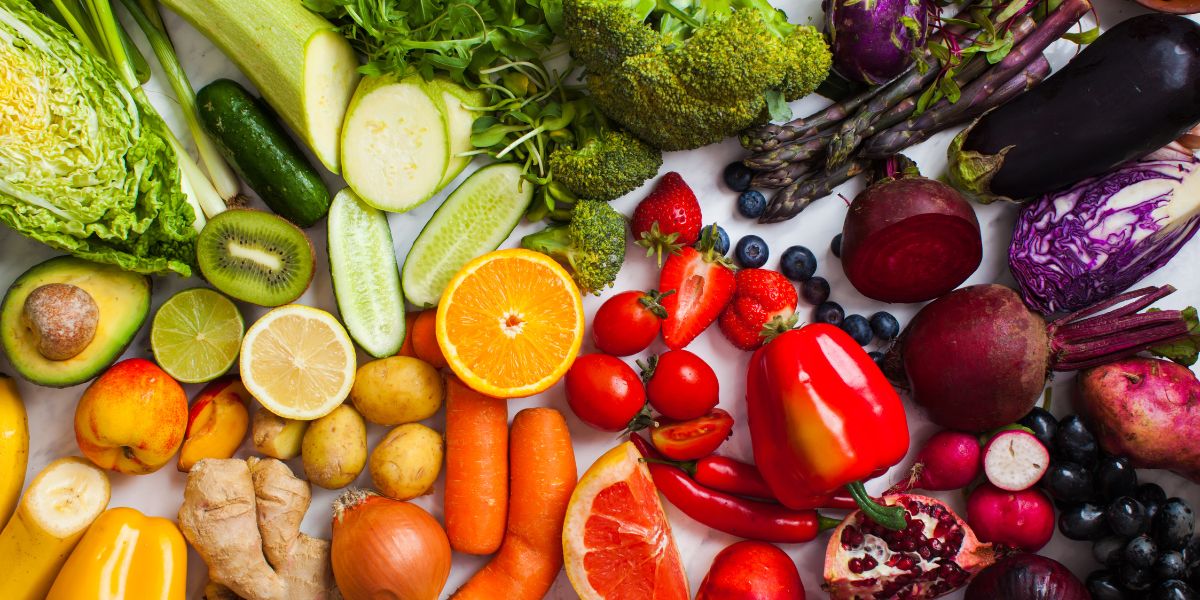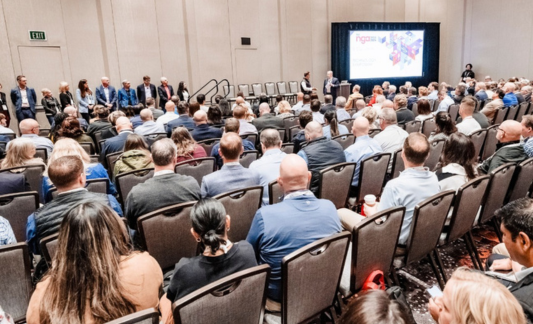Help Isom IGA recover from devasting floods

7 min read
Food Traceability Basics: New Course Helps Grocers Meet 2026 Deadline
Written by IGA News
Jan 28, 2025
The FDA Food Safety Modernization Act (FSMA) Section 204(d) requires additional traceability records for certain foods by January 20, 2026. With less than a year until grocers and suppliers must meet the requirements, it's critical every independent grocer and store manager understand how to meet compliance.
IGA's Retail Learning Institute (RLI) has developed the Food Traceability Basics course with the National Grocers Association (NGA) to help independents better understand the forthcoming requirements and how to get started. The interactive course, available to IGA members and NGA Online members, supplements NGA's Traceability Guide. It allows grocers to test their knowledge in preparation for the implementation of this complex rule.
During this approximately 15-minute course, students will learn to:
- Define food traceability and how it will change the food supply chain.
- Identify Critical Tracking Events (CTEs) needed to follow FSMA rules.
- Create a traceability plan that meets regulatory requirements and improves food safety.
"Understanding these concepts is crucial for ensuring compliance and promoting food safety within grocery stores, wholesalers, and food vendors," Retail Learning Institute Learning Solutions Director Ana Velázquez said.
IGA and NGA Online members can access the course by logging in to the Retail Learning Institute and searching "Food Traceability Basics." For more information on FSMA 204, including what it means for independent grocers, what compliance looks like, and what retailers can do now to prepare, watch the below webinar with IGA CEO John Ross and NGA VP Government Relations and Political Affairs Stephanie Johnson.
Here for the resources? Find them below:
- Food Traceability List (FTL)
- FSMA FAQs
- IGA Coca-Cola Institute Training (log in to search food safety courses)
- FDA information on Critical Tracking Events (CTE) and Key Data Elements (KDE)
- ReposiTrak's Get Ready Guide
- NGA and ReposiTrak's Traceability Resource Center
- NGA's Traceability Guide, sponsored by UNFI
What is the FDA Traceability Rule?
Johnson: The FDA Traceability Rule is designed to provide a more targeted approach to recalls.
With this new rule, the FDA is expecting that they'll be able to call the retailer up at any time and get the information to trace a food on the traceability list within 24 hours of receiving your records all the way back to the farm or a boat.
To do that, they're going to need a lot of data. Now the rule only requires this of certain foods, so it's not every single food but it is quite a lot of foods. It's very important and will change how retailers interact with these foods moving forward.
What are the foods on the traceability list?
FDA: You can find the full Food Traceability List (FTL) on the FDA website here. This list identifies the foods for which the additional traceability records are required. The additional record-keeping requirements apply to the foods specifically listed on the FTL, and to foods that contain listed foods as ingredients, provided that the listed food that is used as an ingredient remains in the same form (e.g., fresh) in which it appears on the list.
Foods include (please see the full list for all details):
- Soft cheeses
- Shell eggs
- Nut butters
- Fresh cucumbers
- Fresh herbs
- Fresh or fresh-cut leafy greens
- Fresh melons
- Fresh peppers
- Fresh sprouts
- Fresh tomatoes
- Fresh tropical tree fruits
- Fresh-cut fruits
- Fresh-cut vegetables other than leafy greens
- Fresh, frozen, and smoked finfish
- Fresh and frozen crustaceans
- Fresh and frozen molluscan shellfish and bivalves
- Ready-to-eat deli salads
What about local products?
FDA: Produce farms with average annual sales of produce of $25,000 or less (adjusted for inflation) are exempt. See the specific exemption rules here.
Ross: With that exemption, stores that use small farms for local produce have the opportunity to double down on their marketing when it comes to Local Equals Fresh, since you won't have to do the same level of reporting on that that you would do if you were buying it through a two- or three-step distribution system. You can tell a story in the aisle about family farmers working with family retailers to bring the freshest, healthiest food.
What role do wholesalers play in traceability and this law?
Johnson: We've been working closely with the wholesaler members of NGA, and yes, they have a much more complex situation than retailers do.
Wholesalers bring in product from manufacturers all over the world, and they're going to have to determine what foods are on the Traceability List. They are going to have to put pressure upstream to make sure that the manufacturers, farmers, and all the distributors that they work with are providing them the information that they need so that they can give it to the retailers.
They want to make this as seamless as possible, so grocers should talk with their wholesalers and tell them what you need to comply, because that will help direct the work that they're doing on their end.
What does a traceability plan entail for an independent grocer?
Johnson: The FDA is asking for very specific data at each step in the food chain for foods on the Food Traceability List. They have critical tracking events that they consider to be places where the data needs to be collected. For the most part, that will be at the harvesting when they're producing, processing, shipping, and receiving the foods.
The biggest concern for grocers is the receiving part. When you're receiving these foods, you will need to collect the data that came from the step before you, usually the wholesaler, and then you're going to have to create the data within your store when you receive the food.
You'll need to track what the FDA is calling key data elements, which is a package of data for each of these foods. There are different requirements based on when someone receives the food. For a grocer receiving food from a distributor, the key data elements are:
- Traceability lot code for the food
- Quantity and unit of measure of the food
- Product description for the food
- Location description for the immediate previous source (other than a transporter) for the food
- Location description for where the food was received
- Date you received the food
- Location description for the traceability lot code source or the traceability lot code source reference
- Reference document type and reference document number
It's a lot of information, but they'll want this on a case level, so for example, every case of watermelon will need to have all this data.
See this PDF from the FDA on critical tracking events and key data elements for detailed information and requirements.
What happens if a grocer prepares foods in store or has a central kitchen?
Johnson: You'll be receiving these foods and you might be transforming these foods. Let's say you receive watermelon from a distributor and cut the watermelon to sell in your store.
The watermelon was picked from the farm, packed at the packing station right next to it, and so it received its it traceability lot code there. Then it goes through the supply chain: your distributor distributes it to you, they give you their data, and you put your own data with that watermelon.
Now we have the watermelon that has been traced from farm to retail. If you're cutting that watermelon in your store, you don't need to add any additional data. That's it; you're done with your traceability requirements.
If you have a central kitchen or make deli foods in one store and then ship them out to multiple stores, the transformation key data elements will apply to you. You will need to create a new traceability lot code for that item, because now it's transformed into a new traceability food. You will assign an alphanumeric code to your cut watermelon and transfer that data to all the retailers that you give that food to. Then those retailers will need to make new receiving data for their stores, so they add their key data elements when they receive that cut watermelon.
It's adding a lot of extra steps to what is already a complicated process.
Why do our grocery retailers need to worry about this right now?
Johnson: The FDA is looking to have the rule fully implemented in January 2026, which is less than one year away. There are a lot of steps that need to be taken to become compliant with this rule.
Are there organizations that can help IGA retailers with the compliance process?
Johnson: It will be a combination of working with your wholesaler, POS system partner, and potentially another provider with software you need to execute compliance.
ReposiTrak is an official NGA partner who is set up specifically to help us with this rule. If you are considering a third party partner, it's very important to communicate upstream to both your wholesalers and these software companies to make sure that they know exactly what you need so that you can comply within your individual store.
Ross: IGA and NGA are exploring partners and additional training that our retailers will need to stay on track. For now, we suggest you speak with your wholesaler and stay tuned to The IGA Minute for more information.
View ReposiTrak's Get Ready Guide here.
What can independent grocery stores do this month to get on the right track for compliance?
Johnson: Use 15-minutes to take the Food Traceability Basics course through the Retail Learning Institute to get those basics down. Ask your food safety and IT teams and your general managers to take the course as well. Then get that group together to talk about what this rule would look like in your specific store. Your food safety folks are going to be familiar with a HACCP plan, which shares a lot of elements with this traceability rule.
Since this is going to be such a data and technology-focused rule, you're going to want to bring in your IT folks to make sure that they're really on board. Since you'll be scanning things you might not have scanned before (like every box that comes in off a pallet), it's going to take a while to train your staff and set up procedures for your store.
I would start looking at at the steps of the traceability plan and have those teams together talking about how it impacts their departments.
If you don't have an IT team or a food safety team, bring together the individuals in your store that are responsible for unloading trucks, preparing food, and the point person for technology in your store. These individuals have an understanding of how the operation works and where changes might need to be implemented.
Find the Retail Learning Institute Course by logging in and searching "Food Traceability Basics."
You May Also Like
These Stories on Feature Story
Dec 9, 2025 4:16:05 PM |
6 min read
Nov 19, 2025 6:04:44 PM |
5 min read
Nov 12, 2025 10:09:52 AM |
2 min read



No Comments Yet
Let us know what you think